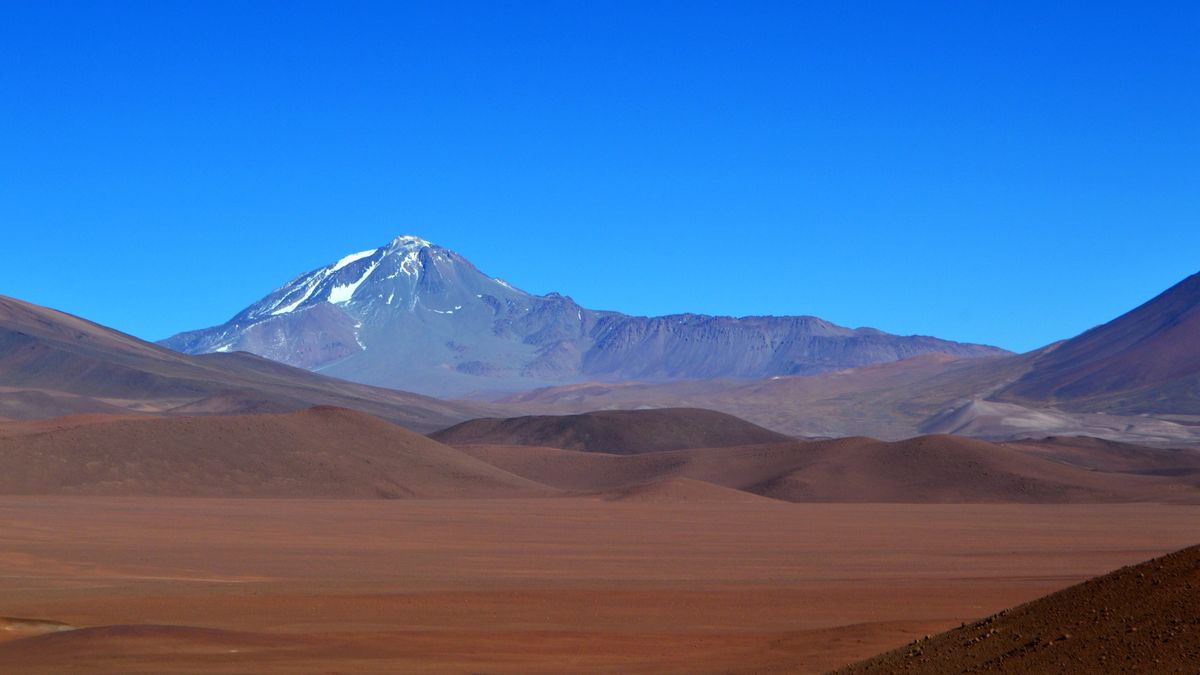
The hostile, snow-capped tops of volcanoes in the Andes are home to the world’s highest-dwelling vertebrates, new research confirms. The finding that small mammals live 22,000 feet (6,700 meters) above sea level challenges assumptions about the limits of vertebrate life, researchers told Science magazine.
In the past, scientists repeatedly found mummified mice preserved in below-freezing temperatures high up on these peaks, but they didn’t know if the small mammals lived on the volcano tops or just visited them.
“Mouse mummies have occasionally been discovered in association with Incan ceremonial structures and burial sites at or near summits of several high Andean volcanoes,” researchers wrote in a new study, published Oct. 23 in the journal Current Biology. “It has even been hypothesized that the animals were used as part of sacrificial rituals.”
But when the authors dated the mummified leaf-eared mice (Phyllotis vaccarum), they found that even the most ancient ones were just a few centuries old — not old enough to have been transported there by the Incas. This raised the possibility the mice lived there and had been mummified naturally by the cold, dry conditions.
Related: Takins: Strange, mountain-dwelling mammals with mythical golden fleeces
In 2013, researchers climbing up Llullaillaco volcano on the border between Argentina and Chile spotted, for the first time, a live mouse scurrying across a snow field at a record-breaking altitude of 20,360 feet (6,205 m). The team returned in 2020 and trapped several more live mice, including on the volcano’s summit at 22,100 feet (6,739 m) elevation, according to a study published at the time in PNAS. This was the highest a vertebrate had ever been found (birds soar higher but do not live at these elevations).
No plants can survive on the volcano’s wind-whipped summit, and oxygen levels are 40% lower than those at sea level. But in the past three years, researchers have collected hundreds of additional mummified and live leaf-eared mice from Llullaillaco and other volcanoes taller than 19,700 feet (6,000 m) in the Puna de Atacama region.
“Such extreme elevations were previously assumed to be completely uninhabitable by mammals,” researchers wrote in the new study.
To show that the mini-mice really did thrive this high up, the team compared the genomes of mice found above 19,700 feet to mice living lower down and found the high-dwelling rodents were more closely related to each other — but only slightly.
Even if the genetic difference was small, “it’s really cool to see that they were closely related,” Catherine Ivy, a postdoctoral researcher and comparative physiologist at the University of Western Ontario in Canada, who was not involved in the study, told Science. “It helps solidify that these mice were actually breeding and residing at these altitudes.”

Researchers also discovered rodent burrows above 19,700 feet. Together with the fact that specimens from the same peak were genetically similar and evenly split between males and females, the results confirm that “summit mice represent members of resident populations and were not simply transient sojourners,” the study authors wrote.
“I might add leaf-eared mice to my list of ‘extremophiles’ normally reserved for microorganisms,” Grant McClelland, a comparative physiologist and professor of biology at McMaster University in Canada who was not involved in the study, told Science.
The mystery of the mummified mice may be resolved, but it remains unclear what leaf-eared mice eat and how they stay warm to survive their frigid habitat. Researchers hope to solve the puzzle by studying a colony of high-altitude mice they recently established in Chile.
You can read more about the high-living mice at Science.

